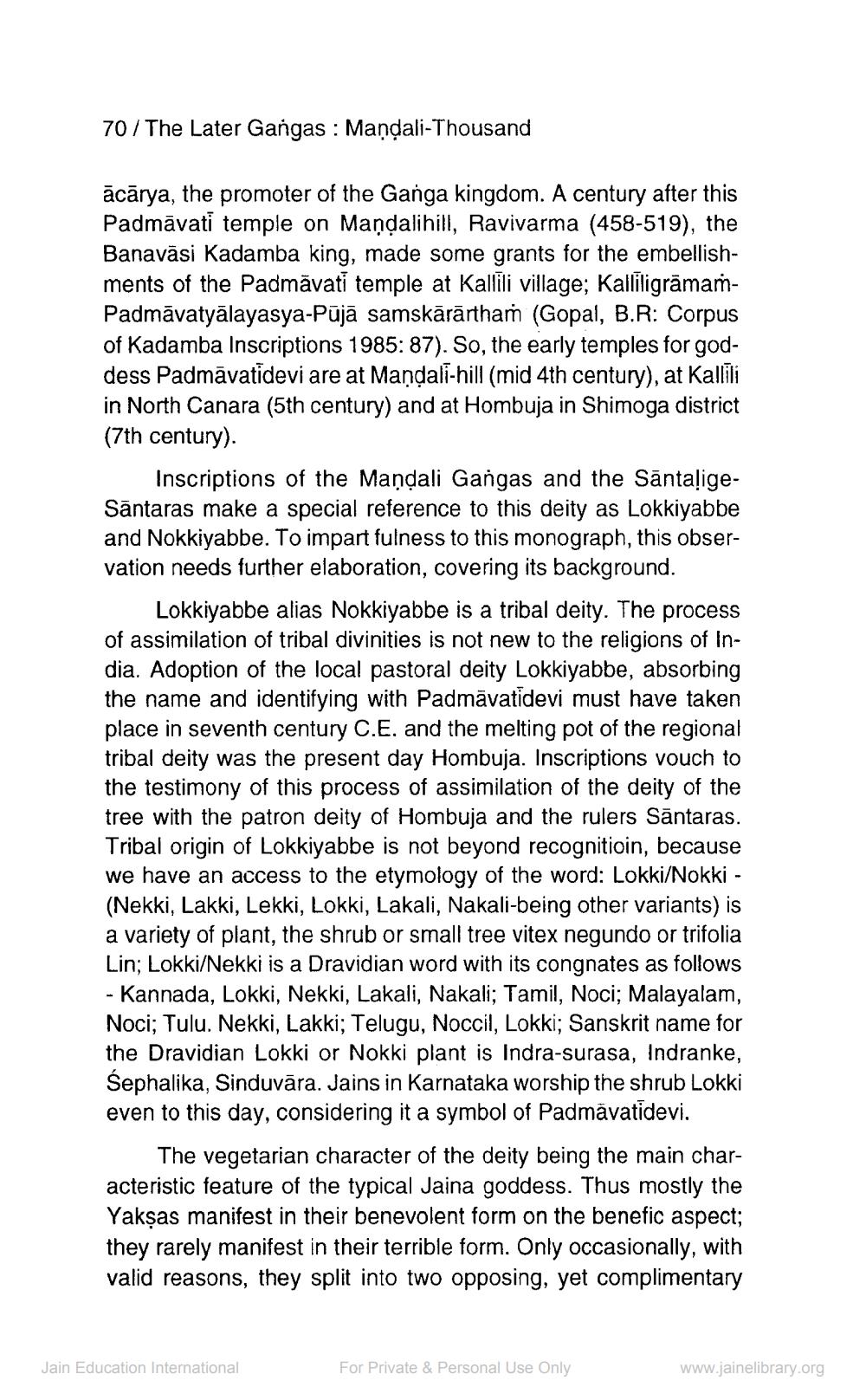________________
70 / The Later Gangas : Maņdali-Thousand
ācārya, the promoter of the Ganga kingdom. A century after this Padmāvati temple on Mandalihill, Ravivarma (458-519), the Banavāsi Kadamba king, made some grants for the embellishments of the Padmăvati temple at Kallili village; KalliligrāmamPadmāvatyālayasya-Pūjā samskārārtham (Gopal, B.R: Corpus of Kadamba Inscriptions 1985: 87). So, the early temples for goddess Padmāvatidevi are at Mandali-hill (mid 4th century), at Kallīli in North Canara (5th century) and at Hombuja in Shimoga district (7th century).
Inscriptions of the Mandali Gangas and the SāntaļigeSāntaras make a special reference to this deity as Lokkiyabbe and Nokkiyabbe. To impart fulness to this monograph, this observation needs further elaboration, covering its background.
Lokkiyabbe alias Nokkiyabbe is a tribal deity. The process of assimilation of tribal divinities is not new to the religions of india. Adoption of the local pastoral deity Lokkiyabbe, absorbing the name and identifying with Padmāvatidevi must have taken place in seventh century C.E. and the melting pot of the regional tribal deity was the present day Hombuja. Inscriptions vouch to the testimony of this process of assimilation of the deity of the tree with the patron deity of Hombuja and the rulers Sāntaras. Tribal origin of Lokkiyabbe is not beyond recognitioin, because we have an access to the etymology of the word: Lokki/Nokki - (Nekki, Lakki, Lekki, Lokki, Lakali, Nakali-being other variants) is a variety of plant, the shrub or small tree vitex negundo or trifolia Lin; Lokki/Nekki is a Dravidian word with its congnates as follows - Kannada, Lokki, Nekki, Lakali, Nakali; Tamil, Noci; Malayalam, Noci; Tulu. Nekki, Lakki; Telugu, Noccil, Lokki; Sanskrit name for the Dravidian Lokki or Nokki plant is Indra-surasa, Indranke, Sephalika, Sinduvāra. Jains in Karnataka worship the shrub Lokki even to this day, considering it a symbol of Padmavatidevi.
The vegetarian character of the deity being the main characteristic feature of the typical Jaina goddess. Thus mostly the Yaksas manifest in their benevolent form on the benefic aspect; they rarely manifest in their terrible form. Only occasionally, with valid reasons, they split into two opposing, yet complimentary
Jain Education International
For Private & Personal Use Only
www.jainelibrary.org




